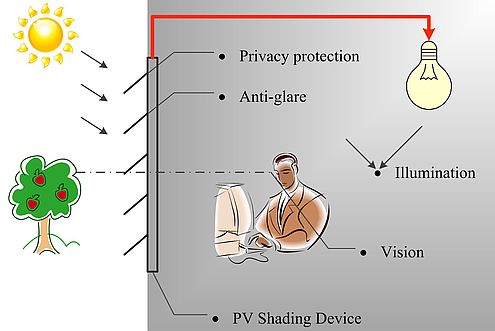INPUT
Earth Abundant Materials based Monolithic Photovoltaic-Photo-electrochemical Device toward 15 percent Solar-to-Hydrogen Conversion Efficiencies
Nowadays, building integrated photovoltaic (BIPV) is beyond just simply fixing PV panels on roofs. PV materials are more likely to be contained within the building envelope, or as a functional component of the building. Since modern buildings have more vertical areas than horizontal areas on roofs, window becomes a potential channel to harvest solar energy. Besides power generation, window PVs are also involved in such building functions as daylighting control, privacy protection, open view, glare prevention, etc. In this project, integrated PV materials are designed to interact with window treatments (i.e. blinds, shutters, films, etc.). Optimal lighting and energy control will also be studied based on such designs. The aim of this project is not limited to power generation for net zero energy buildings. The purpose of designing such PV windows is to provide occupants with healthy and comfortable working and living environment.

Research objectives
This joint project is supported by both TU Delft and China State Key Laboratory of Solid State Lighting. Relevant research questions are conducted in the following aspects.
- Optimal design of the photovoltaic shading device considering the shadowing effects: simulation and experimental verification.
- Design and test of energy-generating and transmittance-tuneable glass with combination of thin film silicon solar cells and polymer dispersed liquid crystals layers.
- Distributed lighting control strategies to optimize the illumination distribution with the daylight harvesting functions. .
- Cooperated control algorithms of PV integrated shading devices and artificial lighting systems for balancing the power generation, illumination quality and user demand.
Input
Subsidy:
Duration:
People involved: Prof. dr. Arno Smets, Yuan Gao (PhD candidate)

